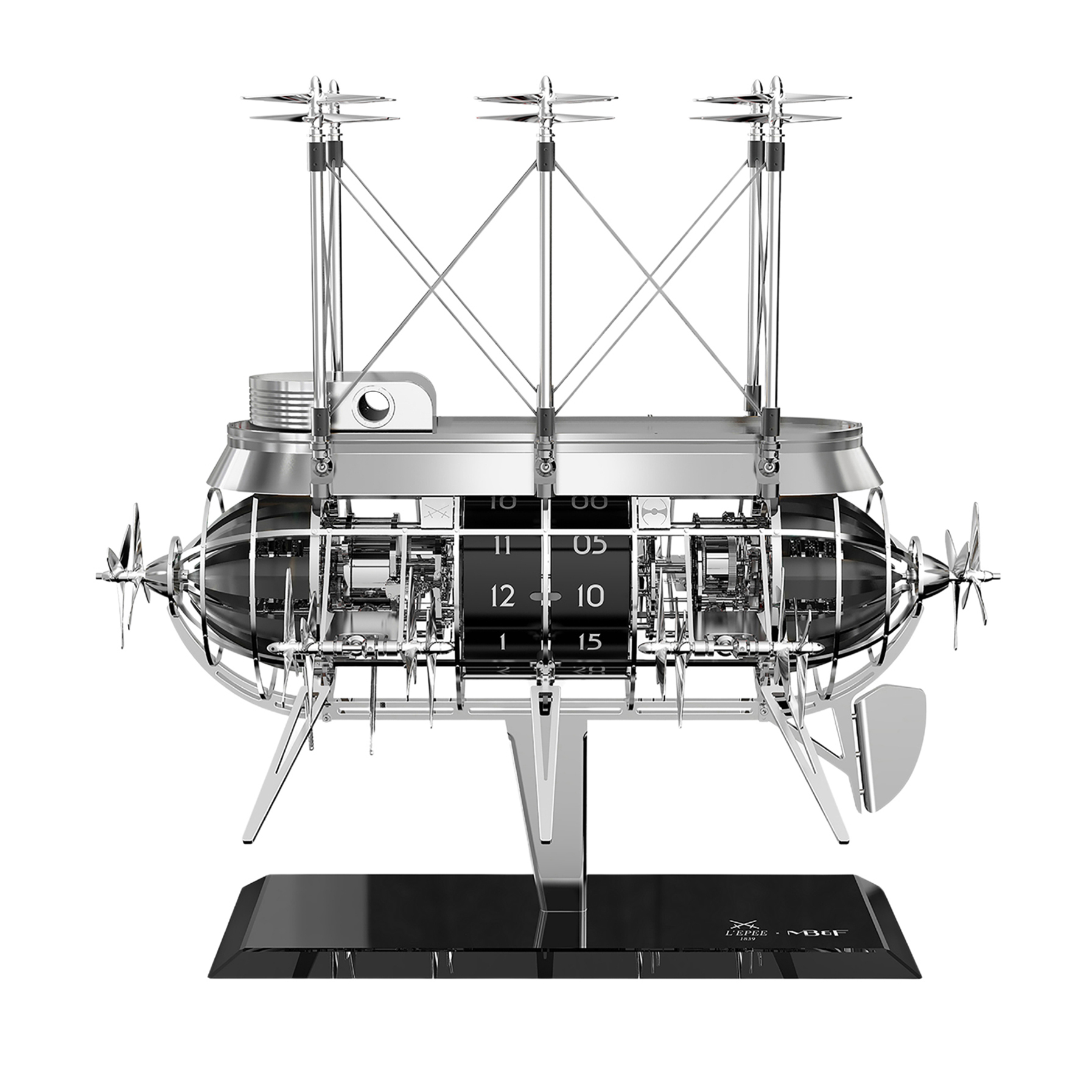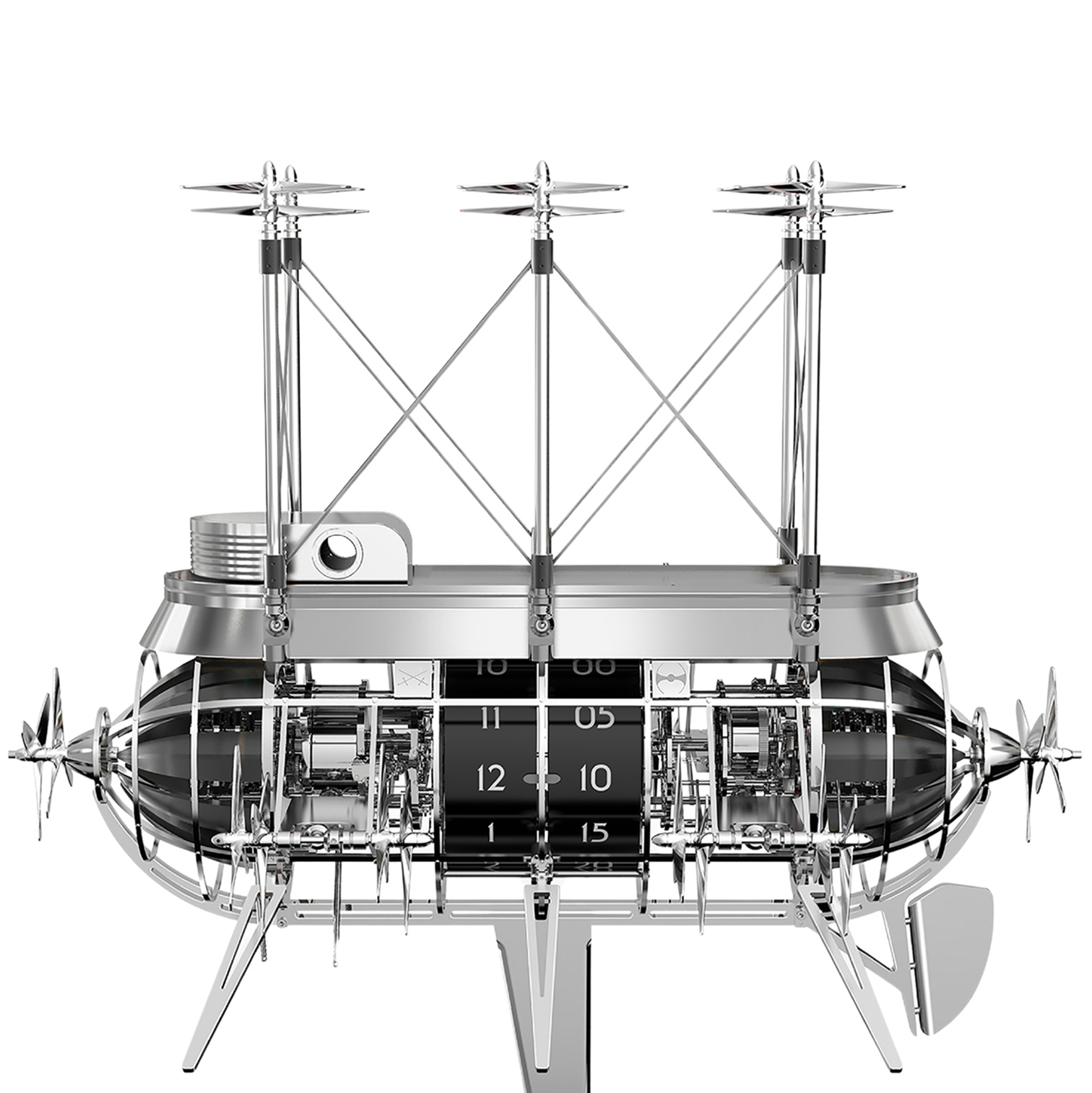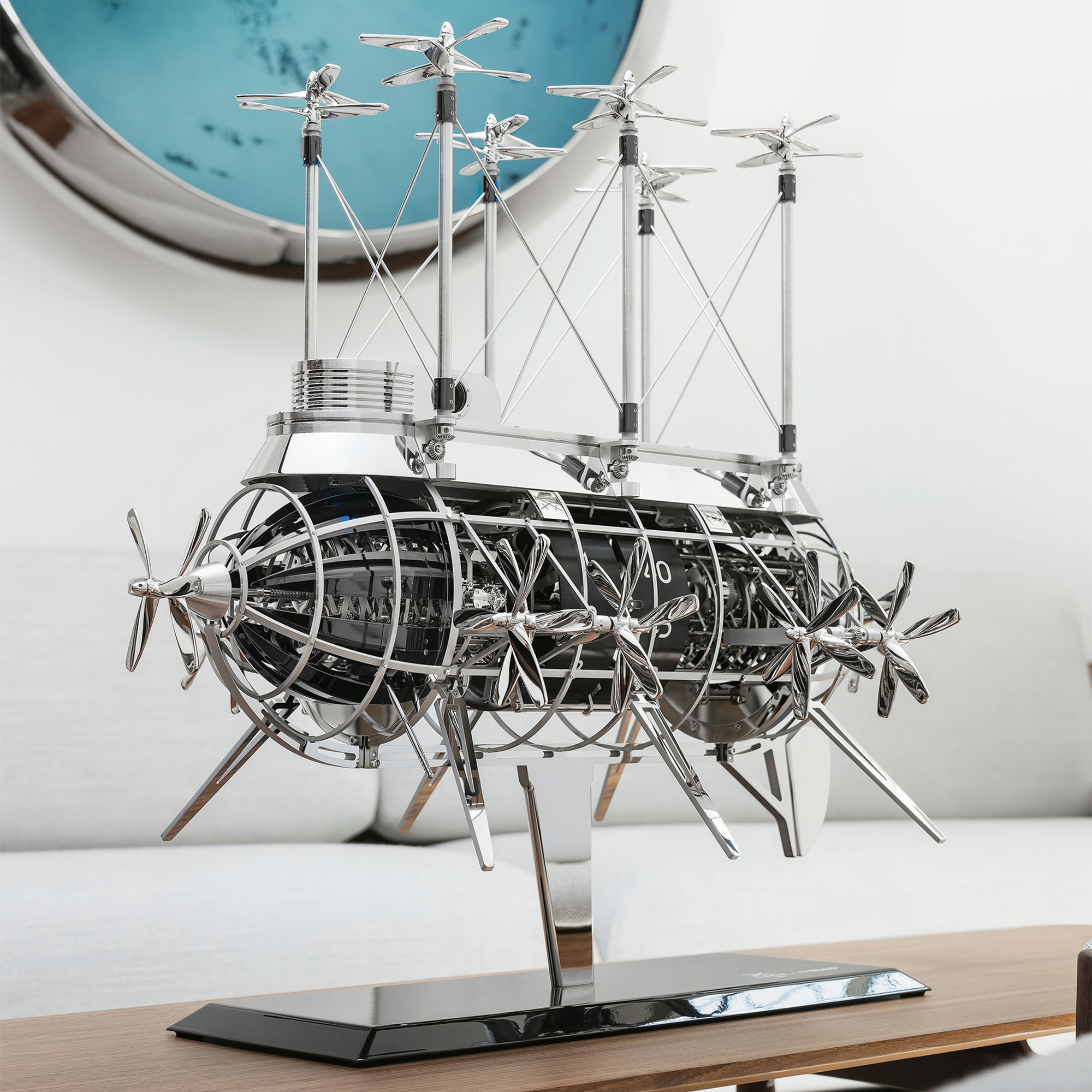
Albatross L'Epée 1839 X MB&F
Brass, aluminium, translucent lacquer
Power reserve: 192 h, 18000 vph
Skeleton movement
Albatross features a striking hour function – chiming both the specific hours on the hour and a single strike on the half-hour – and an automaton composed of 16 pairs of propellers that launch into action every hour. A mechanical computer lets the owner choose between full operation mode, full quiet mode, silent mode with the propellers running, or just the chime. There is also a “repeat on demand” button to repeat the predefined chime/automaton setting or to activate the propellers in standalone continuous motion.
The brainchild of designer Eric Meyer, Albatross was inspired by the “Albatross” airship in Jules Verne’s novel Robur the Conqueror, as well as Verne’s broader fascination with flight, rockets, and hot air balloons.
The clock’s technical specifications are impressive: 1,520 components, 17 kg in weight, and dimensions of 60 cm long by 60 cm high and 35 cm wide. Inside the aircraft are two movements and two winding systems: one powers the time and striking hour via two separate barrels, while the other drives the automaton, powered by a third barrel. The first movement is manually wound via the propellers at the front of the flying machine – clockwise for the striking hour and counter-clockwise for the time. The propellers at the rear are used to wind the automaton. In terms of power reserve, the clock runs for an average of eight days – whether the chiming function is activated or not – and the automaton operates for about one hour.
Not only is this the first “propeller hour” clock ever to be created, but it has a mechanical system inside that allows its future owner to turn the actions on or off, as desired. Thanks to the mechanical computer, the propellers can turn independently of the chime, and vice versa.
A closer look at the propellers reveals that they work in synchronized pairs, turning together to create the illusion of increased speed. Each pair rotates at a speed of 7 seconds for half a turn, or 14 seconds for a full turn, ensuring they remain visible and don’t create any wind.
The propellers on the left side of the spaceship turn one way, while those on the right side go the other way, as if the ship really was going to take off. Another detail to note is that when the hour strikes, the propellers operate instantaneously, attesting to the attention to detail that has gone into the Albatross’ creation.



